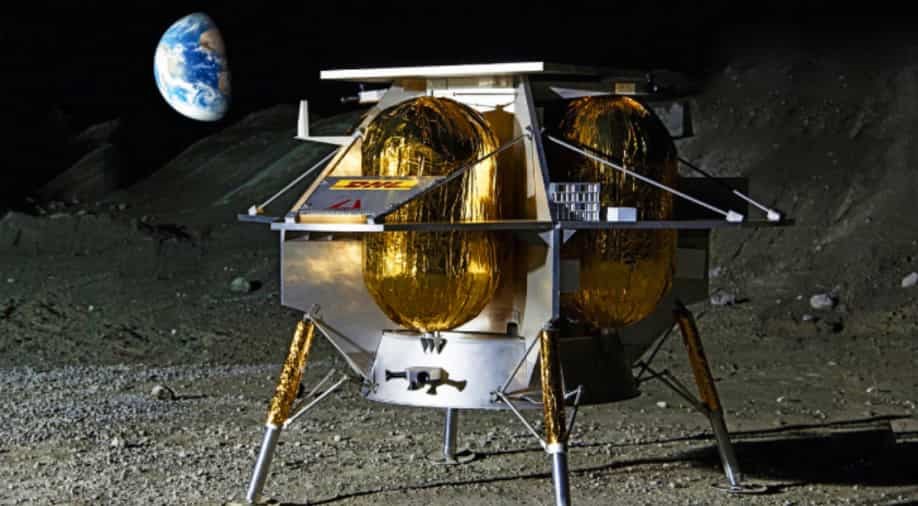LUNAR CODEX

Disclaimer: Copyright infringement not intended.
Context
- Lunar Codex Program aims to preserve Human Creativity on the Moon.
Details
Introduction
- Spearheaded by Samuel Peralta, a semi-retired physicist and art collector from Canada.
- Aims to collect various forms of art created by humans from around the world.
Mission and Purpose
- Creating a lasting record of human creativity.
- Sending a message to future generations about the resilience of human creativity during challenging times.
Art Collection
- Gathered from 30,000 artists, writers, filmmakers, and musicians from 157 countries.
- Art forms include images, magazines, books, podcasts, movies, and music.
Storage and Transportation
- Stored on memory cards or laser-etched on NanoFiche for safe transport to the moon.
- First capsule, the Orion collection, already sent on NASA's Artemis 1 mission.
Art on the Moon
- Future lunar landers to take Lunar Codex capsules to various destinations on the moon's South Pole and Sinus Viscositatis.
Diverse Artworks
- Includes Ayana Ross’s New American Gothic, winner of the 2021 Bennett Prize for female artists.
- Woodcuts and linocuts by Oleysa Dzhurayeva, a printmaker who left Kyiv after Russia invaded Ukraine.
- Paintings by Connie Karleta Sales, an artist and poet living with neuromyelitis optica.
Inspiration
- Reflects the richness of our world today despite wars, pandemics, and climate upheaval.
- Highlights humankind's ability to dream and create art even amidst adversity.
Legacy on the Moon
- Lunar Codex aims to preserve human artistic expression as a lasting legacy for future generations.
- Art on the moon serves as a testament to human creativity and perseverance.
Moon
- The Moon, Earth's only natural satellite, has been a source of fascination and wonder for humans throughout history.
Physical Characteristics
- The Moon has a diameter of approximately 3,474 kilometers (2,159 miles), making it about one-fourth the size of Earth.
- Its surface is a barren landscape covered with impact craters, mountains, valleys, and vast plains known as maria.
- These maria, composed of solidified lava, were formed by ancient volcanic activity.
- Unlike Earth, the Moon lacks a significant atmosphere, making it susceptible to cosmic impacts, solar radiation, and extreme temperature variations.
Orbit and Rotation
- The Moon orbits the Earth at an average distance of about 384,400 kilometers (238,855 miles).
- It takes approximately 27.3 days to complete one orbit around Earth, which is known as a lunar month.
- Interestingly, the Moon is tidally locked to Earth, meaning the same side always faces our planet.
- As a result, we only see one side of the Moon, and the far side remains hidden from direct view.
Lunar Phases
- One of the Moon's most captivating features is its ever-changing appearance, known as lunar phases.
- As the Moon orbits the Earth, the relative positions of the Sun, Earth, and Moon create different illumination patterns on its surface.
- These phases include the new moon, crescent, first quarter, gibbous, and full moon.
- The cycle of lunar phases repeats approximately every 29.5 days, known as a synodic month.
Influence on Earth
- The Moon exerts a powerful gravitational force on Earth, causing ocean tides.
- The tidal forces arise from the difference in gravitational pull on the side of the Earth nearest to the Moon (closest tide) and the side farthest from the Moon (opposite tide).
- The gravitational interaction between the Moon and Earth also leads to the phenomenon of Earth's axial precession, contributing to a stable climate over geological timescales.
- Lunar eclipses occur when the Earth comes between the Sun and the Moon, casting a shadow on the lunar surface.
- Solar eclipses, on the other hand, happen when the Moon passes between the Sun and the Earth, blocking the Sun's light and creating a shadow on Earth's surface.
Exploration and Landings
- The historic Apollo missions, led by NASA, were the first to land humans on the lunar surface.
- Apollo 11, launched on July 16, 1969, successfully landed Neil Armstrong and Buzz Aldrin on the Moon's surface, while Michael Collins orbited above in the command module.
- Following Apollo 11, five more Apollo missions landed astronauts on the Moon until Apollo 17 in 1972. These missions brought back valuable samples and conducted scientific experiments, contributing significantly to our understanding of the Moon's geology and history.
Current Lunar Missions
- In recent years, several countries and space agencies have initiated lunar missions to explore the Moon further.
- NASA's Artemis program aims to return astronauts to the Moon, including the first woman and the next man. This ambitious program aims to establish a sustainable human presence on the Moon by the 2020s.
- India's Chandrayaan-3 mission was launched in 2023.
Potential for Future Exploration
- The Moon's surface contains valuable resources, such as water ice at the poles, which could be used for potential human habitation and future space missions.
- Lunar regolith, the layer of loose soil and dust on the Moon's surface, could be used for construction and shielding against cosmic radiation.
Cultural Significance
- Throughout human history, the Moon has held cultural and symbolic significance in various societies.
- It features prominently in myths, folklore, and religious beliefs across different cultures.
- Many cultures have lunar calendars based on the Moon's phases, and lunar symbolism is often associated with cycles, femininity, and renewal.
|
PRACTICE QUESTION Q. Which of the following statements about the Moon's impact on Earth is/are correct? 1. The Moon's gravitational pull stabilizes Earth's axial tilt. 2. Lunar phases affect the occurrence of solar eclipses on Earth. 3. The Moon's atmosphere plays a crucial role in shaping Earth's climate. A.1 only B.2 only C.1 and 2 only D.1 and 3 only Answer: 1 only |




.jpg)
1.png)
